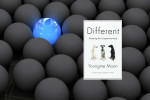What jobs do your customers need your products for?

The Innovator’s Solution: Creating and Sustaining Successful Growth by Clayton Christensen
Clayton Christensen introduces the concept of “jobs to be done” segmentation in The Innovator’s Solution: Creating and Sustaining Successful Growth, his follow-on book written after The Innovator’s Dilemma. The Innovator’s Dilemma outlined how incumbent companies can be ousted by disruptive newcomers if the newcomers offer a “not good enough” solution to under served market segments. This effect occurs because the incumbents are economically motivated to protect their highest margin customers and therefore will free low-end market segments as they are being dominated by the newcomers. The Innovator’s Solution outlines a framework for becoming a disruptive force in the market.
One of the questions Christensen answers in the book is “What products will customers want to buy?” He begins the answer by providing a method for segmenting customers by “the jobs” for which they “hire” products. He gives the example of a restaurant which sells, among other things, milkshakes. It turns out that customers hire milkshakes when they want something fun to do in the car on a long commute and when they want to reward their children. Although the restaurant thought it was competing for customers with other fast-food operations, they were competing with boredom, bagels, and instant breakfast drinks on the one hand and cookie and ice cream on the other. Given this insight, the restaurant might try spicing up their milkshakes with chunks of fruit for the morning commute and making a convenient kids’ size shake for the parents. This example illustrates how examination of the “jobs to be done” leads to some interesting product modifications.
Companies that target their products at the circumstances in which customers find themselves, rather than at the customers themselves, are those that can launch predictably successful products.
Christensen points out that by viewing your market through the lens of products leads you to believe that cramming more features into your products will win the market. However, this perspective typically leads to an “arms race” of product feature introductions.
The second example he gives is the Blackberry, which, he points out, is often hired to interrupt the boredom of a less than interesting meeting. In this case, the Blackberry isn’t competing against other devices–it’s competing against the Wall Street Journal and staring out the window. He suggests that adding news headlines or quick games to the device would increase its attractiveness for the job of breaking the monotony of meetings or being productive in small time snippets.
Christensen lists several barriers to using this method of segmentation: fear of focus, demand for quantification of opportunities, the structure of channels, and advertising strategies. In the case of focus, choosing one or two jobs to be done necessarily eliminates other growth opportunities and closes off some avenues for serving customers. Quantification of market opportunities is most frequently performed based on a product, demographic, or organizational unit basis, not on jobs to be done, because that’s how corporate information systems are typically structured. Channels, such as retail outlets, have a structure and organization already in place and “jobs to be done” doesn’t usually fit into that structure. Advertising planning, like quantification, is performed based on demographics and product usage.
He concludes by pointing out that the jobs for which customers hired products don’t change very much. In the example of film and photographic technology, Christensen notes that just because there is a huge technological enablement for saving, storing, and managing pictures doesn’t mean that people spend any more time rifling through old snapshots than they did before.
Video: Christensen’s classic milkshake case
More on Jobs to Be Done and Disruption
Gartner Symposium IT XPO 2011 – In this presentation from October 2011, Christensen outlines five principles that appear frequently in his books: disruption, competing against non-consumption, supply chain disruption, targeting the job not the consumer, catching the tide of de-commoditization.
Jobs to be done: List of articles, podcasts, posts, Quora groups and other resources related to the “jobs to be done” approach.







